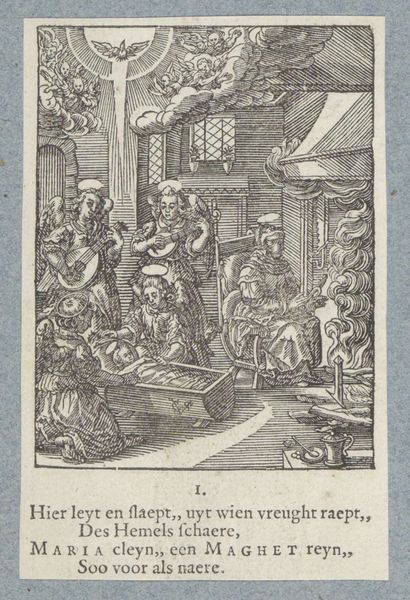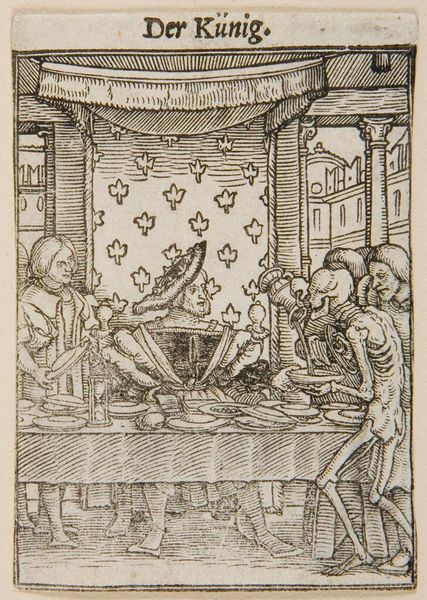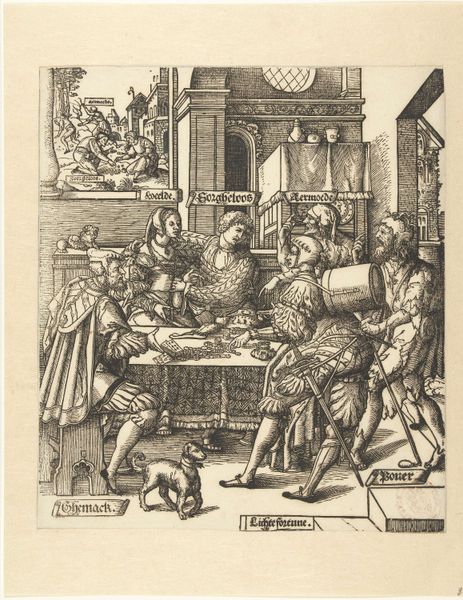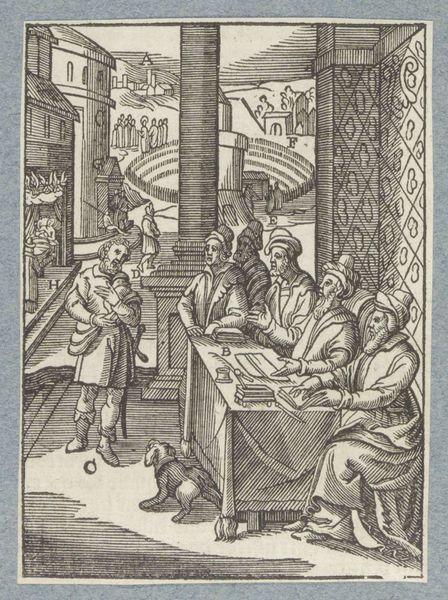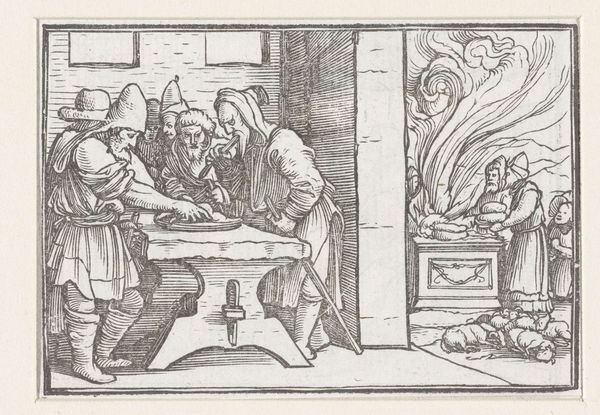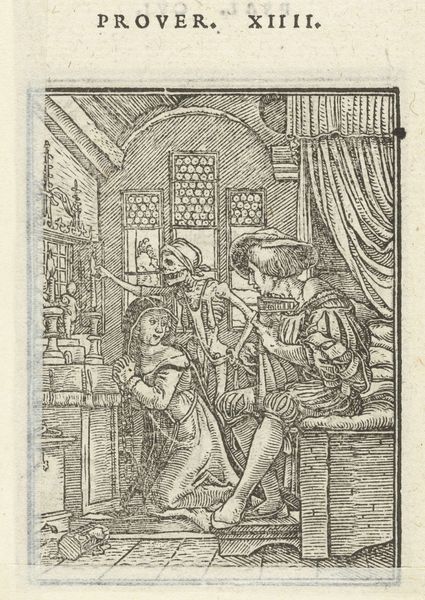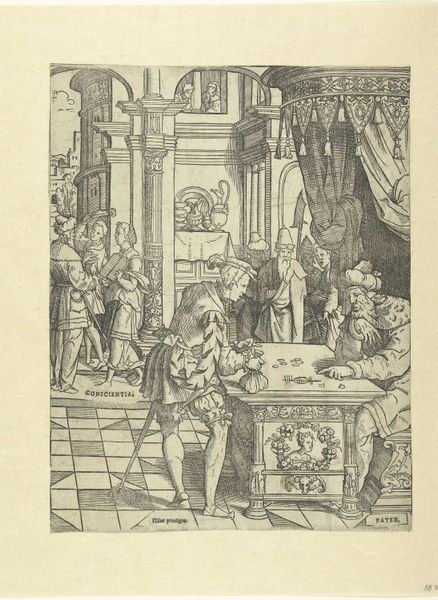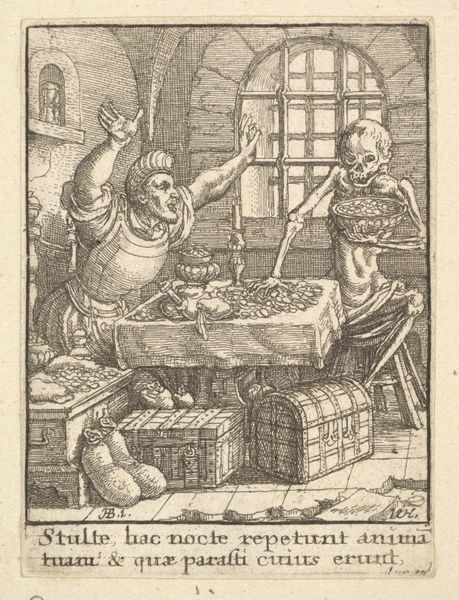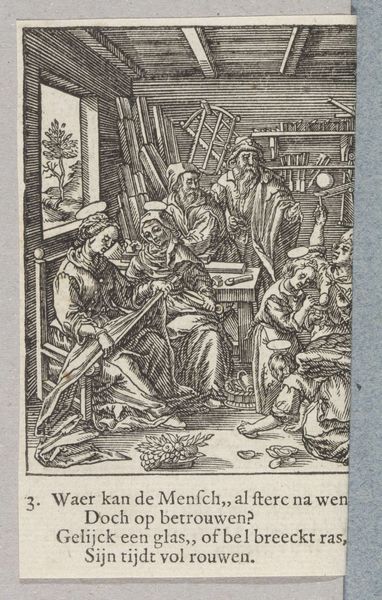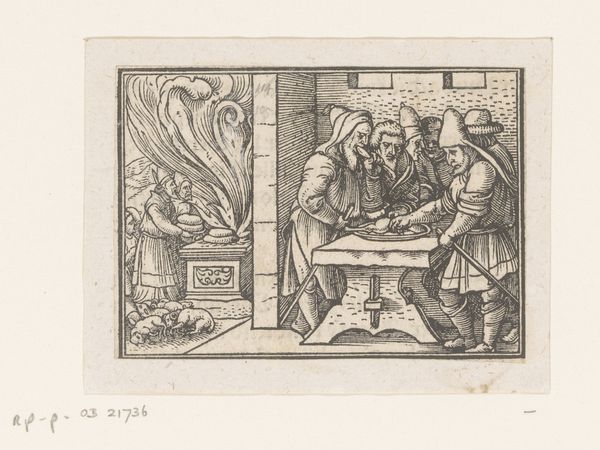
print, woodcut, engraving
#
allegory
#
narrative-art
# print
#
figuration
#
woodcut
#
line
#
history-painting
#
northern-renaissance
#
engraving
Dimensions: height 65 mm, width 50 mm
Copyright: Rijks Museum: Open Domain
This small woodcut, made by Hans Holbein the Younger, probably in the 1520s in Germany, depicts a king at his banquet. Serving him, however, is not a servant, but Death itself. The image is part of a series called "The Dance of Death," a popular theme in the late Middle Ages and Renaissance. It reminds viewers that death comes to everyone, regardless of their social status. The king, despite his power and wealth, is not immune. Holbein made this image in a period of great social and religious upheaval, when the authority of the church and the aristocracy was being questioned. This print reflects a sense of social anxiety and uncertainty, but it also contains a critical element: the democratization of death. To better understand Holbein's image, we can research the historical context of the Reformation, the rise of print culture, and the social role of art in 16th-century Europe. Only in this way can we understand art not just as a beautiful object, but as a product of its time.
Comments
No comments
Be the first to comment and join the conversation on the ultimate creative platform.

